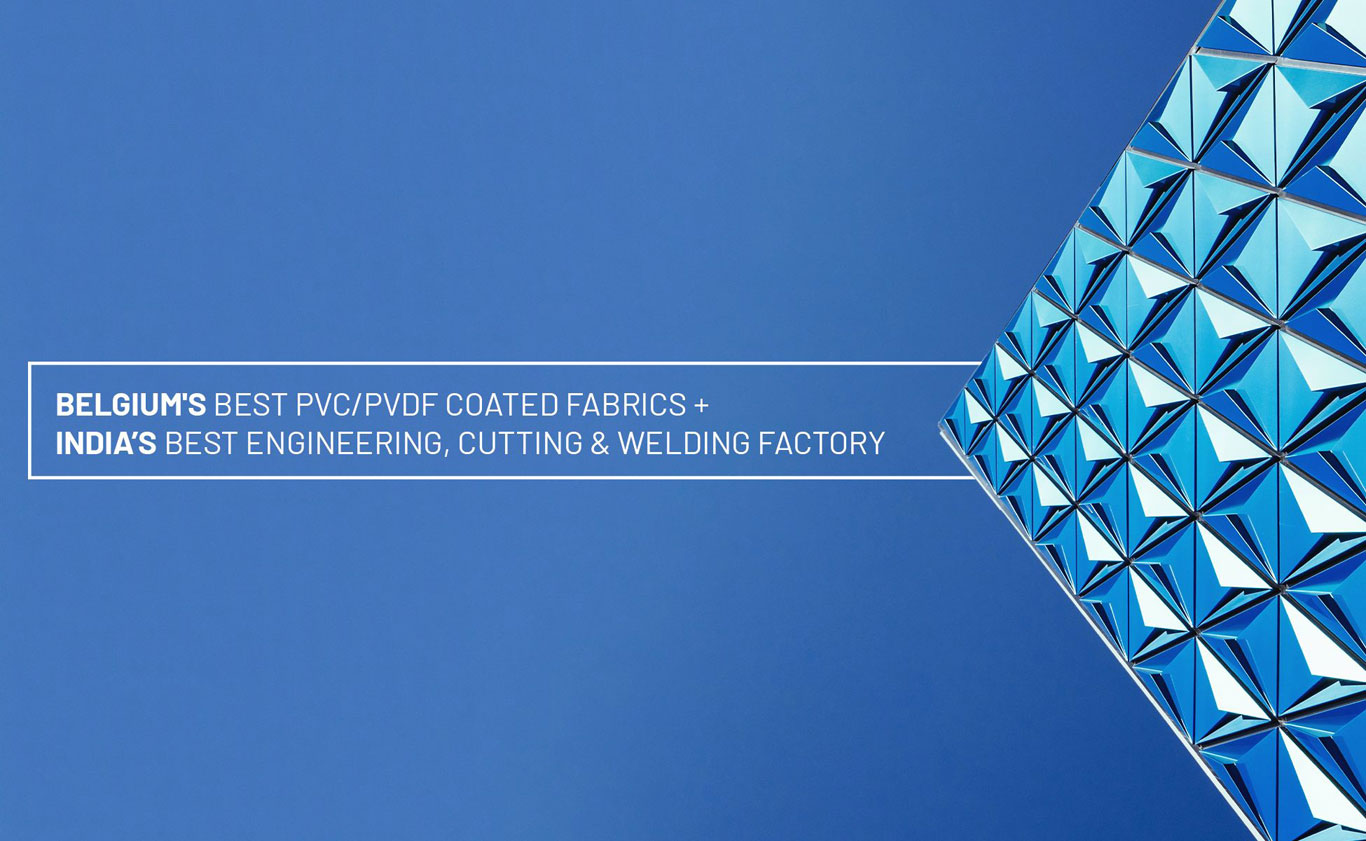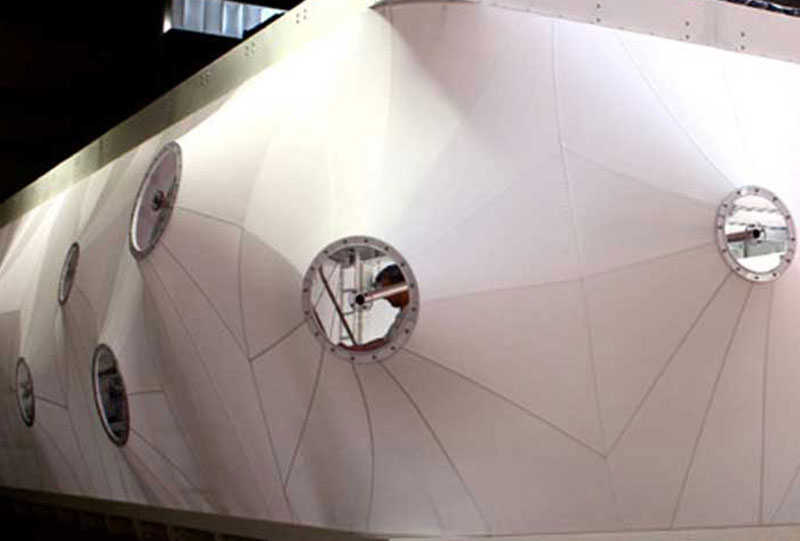
Architectural and Technical Textiles for Textile Architecture Solutions
 High-performance technical textiles make it possible to create light and durable architectural structures. These structures consist of surfaces of tensioned flexible materials designed to withstand the rain, snow and wind loads to which they are exposed.
High-performance technical textiles make it possible to create light and durable architectural structures. These structures consist of surfaces of tensioned flexible materials designed to withstand the rain, snow and wind loads to which they are exposed.
Their flexibility and strength allow for the coverage of large surfaces with fewer materials than in traditional construction as well as a great variety of geometric forms offering unprecedented freedom of expression.
There exists a wide variety of high performance flexible materials to choose from. Some can be used to design special lighting and contrast effects in order to create rich, fluid and luminous spaces. A translucent technical textile is ideal for natural and generous lighting.
Textile structures seamlessly integrate into different types of environments and can be used to convey a strong and unique visual signature.
Primarily used for optimal space design, each membrane has its own characteristics and advantages. They are used as façade cladding, protective roofing, acoustic walls and ceilings that are luminous and sculptural at the same time. They can be permanent or temporary, mobile or retractable.
They are watertight, are highly resistant to wind and snow loads, as well as impact-resistant. Membranes come in differing levels of translucency to let in natural light and their permeability properties facilitate control of solar gains. And finally, their acoustic properties can optimize the comfort level within a space.
Their range of application is varied and includes performance spaces such as stages and amphitheaters, bleachers, exhibition halls, circus tents, sports facilities, commercial and industrial buildings, shade structures for school yards, parks and playgrounds, pedestrian walkways, terraces and gardens. They can also serve as sculptural elements, vertical partitions, textile façades and acoustic ceiling panels.
Lucky Tech Membranes will help to identify:
- The current and future market for architectural textiles
- Key trends and leading suppliers in the industry
- Principal drivers for building and construction textiles
- Innovative materials and technologies - fibres, yarns and fabrics and their production methods, as well as resin systems
- Future trends for textiles used in architecture
Many smart and intelligent textiles have been incorporated in making textiles in architecture more interesting. Chromic materials that change colours like photochromic (in reaction to the intensity of light), thermochromic (in reaction to the intensity of temperature), and piezochromic (in reaction to pressure) are being used.
Besides these, phase changing materials (PCM), conductive optical fibres, and even shape memory materials (SMM) are being developed to increase functionality and aesthetics of textiles used in structures.
Tensile Membrane Applications
- Architectural and Technical Textiles for Textile Architecture Solutions
- Coated Fabrics for Event Halls
- Coated fabrics for Industrial Halls
- Coated Fabrics for Light Weight Construction Halls
- Coated Fabrics for Sports Halls
- Technical Membrane for Hanging Ceilings
- Technical Membrane for Liners
- Technical Membrane for Roofing
- Technical Membrane for Suspended Ceilings
- Tensile Membrane Structures for Restaurants
- Tensile Membrane Structures for Air Supported Halls
- Tensile Membrane Structures for Car Shades
- Tensile Membrane Structures for Interior Architectural Textiles
- Tensile Membrane Structures for Modular Industrial Constructions
- Tensile Membrane Structures for Parking Shades
- Tensile Membrane Structures for Roof Covers
- Tensile Membrane Structures for Shelter
- Tensile Membrane Structures for Solar Protection
- Tensile Membrane Structures for Sport Halls
- Tensile Membrane Structures for Textile Facades
Get Your Free Quote Today!
Tell us about your project needs and we'll provide a custom quote tailored to your specific requirements.
